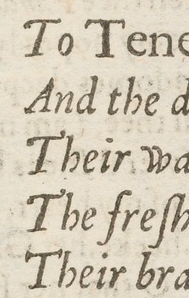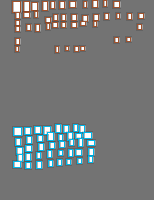Elizabethan Biformed Alphabets Computer Vision Project
Updated a year ago
105
views11
downloadsMetrics
The 'Elizabethan Biformed Alphabets Project' focuses on employing a Yolo-8 model, via Roboflow, for machine recognition of some extremely special historical documents from more than 400 years ago. There is no money-making potential.
The project focuses on the very first-in-the-world application of the Binary Code, described by Sir Francis Bacon in his magisterial tome from 1623, The Advancement of Learning. The main body of this book is, by itself, one of the foundational works of Anglo-American Civilization; but its extremely exotic, brief Appendix also puts forward for the first time:
- A description of the Binary Code.
- The first envisioning of what we today call Telecommunications.
- Steganography, the basis of Digital Watermarks, which is the basis of Digital Rights Management.
This year is the Quadricentennial Year for all of the above, yet who is observing it?
But there is still an even deeper level. Steganography is about embedding hidden messages within an outer, larger text -- such as a book like The Advancement of Learning itself. For some reason there is fierce opposition to the idea that Sir Francis left Messages to Posterity concealed within the text of his books and essays.
The landing page for my website, gorhambury.org provides a concise non-technical overview of the intention of my project.
The page, Experiment One goes into technical depth, and includes my first Python-on-Colab program. It doesn't perform any Machine Vision, but identifies Ground Truth which I believe is valid, though perhaps rather unorthodox.
Experiment Two is intended to introduce Machine Vision to the project, and prove that it is not just a flight of fancy, that Sir Francis concealed his Secret Biography in more than 50 classic works of the Elizabethen era, mainly behind a bevy of pseudonyms (necessarily).
The crypto-trick is: having two sets of font styles within the same block of text. So the following sample is from one of Bacon's works, The First Folio of William Shakespeare (1623):

It can be seen that there are two styles of upper-case T, which encode binary 1's and 0's. Sequential quintets of binary values encode one letter of the English Aphabet.
I'm just getting started with Roboflow, and indeed, Machine Vision, so I am in need of assistance from those more adept.
Use This Trained Model
Try it in your browser, or deploy via our Hosted Inference API and other deployment methods.
Build Computer Vision Applications Faster with Supervision
Visualize and process your model results with our reusable computer vision tools.
Cite This Project
If you use this dataset in a research paper, please cite it using the following BibTeX:
@misc{
elizabethan-biformed-alphabets_dataset,
title = { Elizabethan Biformed Alphabets Dataset },
type = { Open Source Dataset },
author = { Francis Bacon Decipherer },
howpublished = { \url{ https://universe.roboflow.com/francis-bacon-decipherer/elizabethan-biformed-alphabets } },
url = { https://universe.roboflow.com/francis-bacon-decipherer/elizabethan-biformed-alphabets },
journal = { Roboflow Universe },
publisher = { Roboflow },
year = { 2024 },
month = { jan },
note = { visited on 2025-02-19 },
}





















